Blog Archive: October 2014
Hotel Globos Review in Sitges, Spain
| Hotel reviews | 16 seen
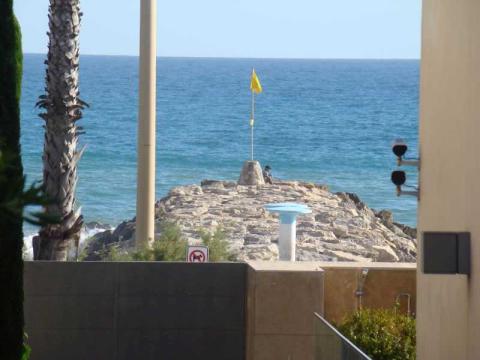
One of the things I like about hotels is not to plan a stay at hotel before. No bookings, no planning. Just pass by, if you like it - go into it, and ask for a room and price. The best of this is bargain.
So did happened this time, after we arrived from Peratallada, a nice medieval town to resort city of Sitges, close to Barcelona. Turns out with spontanous decissions I have not only stayed on hotel I liked, but I have visited one of the most gay resort cities in world.
Price for a room at this hotel: EUR 55
Here comes the pictures of Hotel Globos, hotel we find close to sea:
Bedroom at Hotel Globos
Balcony at hotel Globos
Bedroom at hotel Globos
Bathroom at hotel Globos
Seaside view from hotel Globos at Sitges
Balcony at Hotel Globos
Mojito at hotel Globos
In overall - modest hotel for reasonable price with close to sea location, but a little bit walk distance from city centre. Rooms were clean.
About Hotel GlobosThe Los Globos Hotel Sitges, a charming hotel which is open the whole year…
Peratallada - a Charming Stone Building Town in Catalonia, Spain
| Travel guides | 30 seen
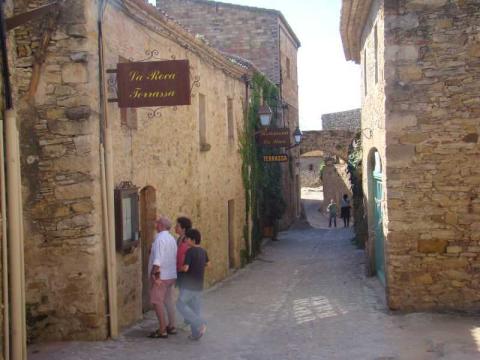
When we left a charming hotel in Begur, we straight headed to a little and charming medieval town of Peratallada, which is located some 22 km east of Girona, and some 15 km west of Begur.
Here are 22 pictures I made at this lovely town:
Road to Peratallada
Peratallada
Medieval streets of Peratallada
Medieval streets of Peratallada
Medieval streets of Peratallada
Catalan flag on streets of Peratallada
Peratallada
Bicycle on streets of Peratallada
Property for sale on Peratallada
Peratallada streets
Peratallada Town square
Restaurant at Peratallada Town square
Restaurant at Peratallada Town square
Balconies at Peratallada Town square
Waiting for coffee con Leche
Lavender on table
Peratallada
Peratallada streets
Peratallada streets
Loca Fruta
Peretallada
Tourist sign
About Peratallada:…Hotel Es Cel de Begur Review in Begur, Spain
| Hotel reviews | 10 seen
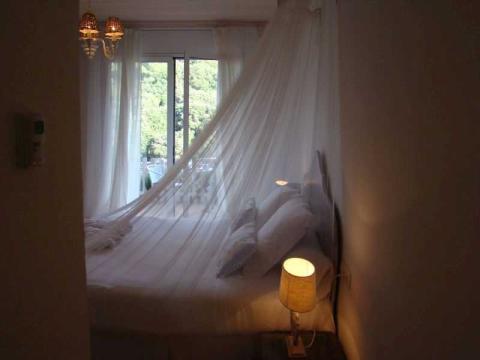
On our third Spain trip day we stayed overnight at one of the interesting hotels I have ever stayed - Es Cel de Begur Hotel at Bergur.
We booked this hotel on Booking.com it offered a huge savings, instead of paying EUR 400 we paid for room with partial sea view and bed with baldachine EUR 81.
Well I doubt the actual value for this room is EUR 400, it's more some booking.com neat marketing trick. But price EUR 81 for such a hotel room in such an amazing place with partial, but still sea view - is a value deal.
Well we ordered few coffees con leche (Coffee with milk in Catalan) and a supper onsite's restaurant, so total bill was EUR 131. No regrets at all.
N.B. Though this place offers free onsite parking - the drive to it, will be...lets say, pretty adventures :) Leave me a comment, if you have tried that road :)
Enough talking, here is the pictures:
Es Cel de Begur Hotel bedroom
Baldachin at Es Cel de Begur Hotel
First time had a sleep at Baldachin
Baldachin at Es Cel de Begur Hotel
Bathroom at Es Cel de…
Salvador Dali Museum in Figueres, Spain
| Museums | 139 seen
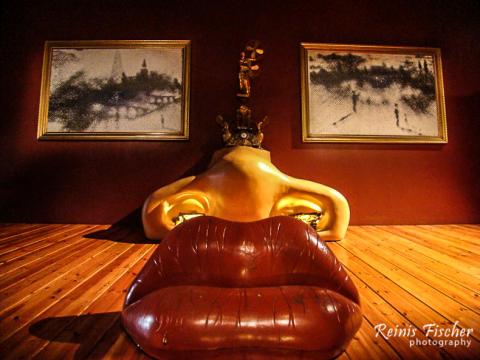
In our second day trip to Spain we visited Salvador Dali Museum located in town of Figueres. I can tell you just one - This has finally happened - had heard so much about this great place before and now I actually visited it.
There are not much words I can use to describe this fabulous museum in Figueras, instead I can offer you 16 pictured from this place (Originally there were 43 pictures, but 2 years latter since originally created this article, I reviewed both article and pictures and made some post-processing for photography in Adobe Lightroom). Now, I feel a bit sorry about myself I can't travel back in time and capture much much better photography, as back then (2014) I was just like another typical tourist flash lighting around with my point and shoot camera. Sad.
But the story is about Salvador Dali, or more precisely about his works and museum in Figueras, so let's leave it as it is, and I will definitely return here for another photography session.
Salvador Dali Museum building at Figueras
The Dalí Theatre and Museum, is a museum of the artist…
Best Budget Laptops for Under $300 in 2023
| Laptop Reviews | 3 seen

In today's digital age, having a laptop is almost a necessity. Whether you're a student, a freelancer, or a professional, a reliable laptop can help you accomplish your tasks with ease. However, high-end laptops can be quite expensive, which can be a burden for those on a tight budget. Thankfully, there are plenty of budget laptops available on the market that offer great value for the price.
In this article, we will discuss the 10 best budget laptops under $300.
Disclaimer: This article contains affiliate links to Amazon, which means that if you decide to make a purchase through these links, I may earn an affiliate income. Please note that this does not affect the price you pay
Acer Chromebook Spin 311: This Chromebook comes with a 360-degree hinge, an 11.6-inch HD touchscreen, and a long battery life. It's great for basic tasks like browsing the web, streaming videos, and creating documents.
Lenovo IdeaPad 1: This 14-inch laptop comes with an AMD A6 processor, 4GB RAM, and a 64GB eMMC. It's a good choice for students and casual users who need a laptop for basic tasks.…
Hotel Tarongeta Review in Cadaques
| Hotel reviews | 10 seen
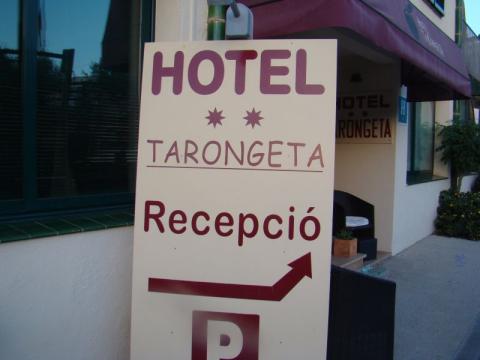
We stayed at hotel Tarongeta in Cadaques in our second day trip to Catalonia, Spain.
You can read my photo article - covering Cadaques here.
Choice of Tarongneta was made spontaneous and all agreements regarding accommodation was made on site, not using any third party booking services (thus, I must admit I found this hotel on booking.com before we arrived at Cadaques)
This hotel offers few benefits - free parking on site, located in centre of Cadaques. The price? EUR 55 per night (I guess could bargain it down to EUR 40 with ease).
Nothing fancy - just great location and free parking.
Bathroom at Hotel Tarongeta
Bathroom at Hotel Tarongeta
Bedroom at Hotel Tarongeta
Bedroom at Hotel Tarongeta
Bedroom at Hotel Tarongeta
Rooms come with TV and free High Speed internet at hotel Targoneta
Corridor at Hotel Tarongeta
Sign right next to entrance at Hotel Tarongeta
Vestibule at Hotel Tarongeta
About Hotel TarongetaSet in picturesque fishing town of Cadaqués, the family-run Hotel…
Exploring Catalonia: from Roses to Cadaques
| Travel guides | 61 seen
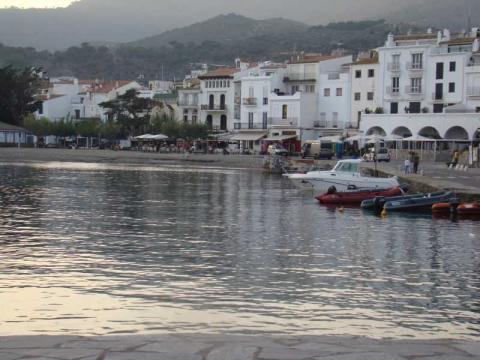
On our second day on Catalonian trip, we left Girona and headed to Roses (Girona municipality) and after a short 5 minute stay at Roses we headed to Cadaques (Girona municipality).
I decided to stick with motto: one picture can say more than 1000 words, and here you have - 30 pictures I took during our trip Roses, Girona - Cadaques, Girona.
Beach at Roses, Girona
Roses, Girona
Literraly after 5 minutes here at Roses beach we decided - there is no need to dig deeper in this beautiful Spanish/Catalonian seaside town, and we turned our car around to head to Cadaques. I guess it's all about spontaneity. Sorry Roses in Girona - I will come back some other day.
On the road to Cadaques
Scenic views
Rocks at Cadaques
Turns out - somewhere near these rocks were Salvador Dali house museum - well, it was hard to find it among those rocks...
Cadaques bay
Instead of Salvador Dali house museum we got nice seaside views
Cactuses on cliffs
Cadaques bay with boats
Boats at…
Hotel Ultonia Review in Girona
| Hotel reviews | 37 seen
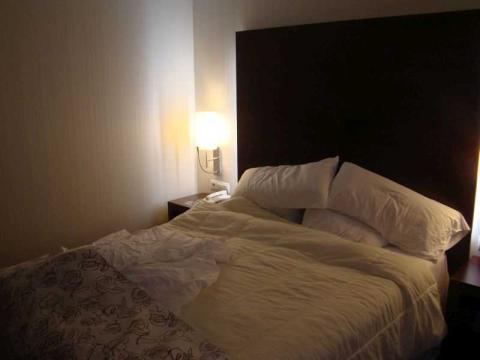
During our first day on our Catalonia trip for a first night, we stayed at Girona - Hotel Ultonia.
For a start I must admit - I wanted to book another less expensive hotel, but that was out of city center - so hell, for a sake of a couple of bucks we decided to book something valuable in the city center.
But to keep up with the costs - I found it's more affordable if you are using hotelclub.com rather booking.com. Basically, it works like this - what on Booking costs in Euro's, the same on hotelclub costs in dollars. And if you are a currency geek - you will understand me - it's 25-30% cheaper.
Now - enough talking, show me the pictures:
Corridor at Hotel Ultonia Girona
Bathroom at hotel Ultonia Girona
Bathroom at hotel Ultonia Girona
Bathroom at hotel Ultonia Girona
Flat Screen TV at Ultonia hotel Girona
Unfortunately, all the channels are only in Spanish.
No English, not to say Russian. I even considered to complain regarding this - I really enjoy watching 1st Russian channel at hotels. And 1st channels has a great offer for those hotels,…
Catalonia: First impressions of Girona - Cathedral of Girona, Jewish Quarter
| Travel guides | 14 seen

This probably will be a long photo article, with few comments on each of the photo.
It was my first time visiting Spain, and stop of Girona came just right after we landed in Barcelona, rented a nice Renault Megane car from Fire Fly company. During this trip I only started to recognize what is Catalonia - not any more an abstract term for me - it's real place with real folks and attractions there.
So here are few shots from Girona, Cathedral of Girona and Jewish Quarter (probably last two are main attractions of Girona)
Scooters on streets of Girona
Green Overpass
Funny Vehicle on streets of Girona
Balcony with flowers at Girona
View to Girona Cathedral
Girona street view
Girona Events desk (Actual on October 19, 2014)
Catatonia's Flag
Scenic streets of Girona
Scenic streets of Girona
Backyard of Girona's street
Scenic street of Girona
Garden close to Girona's Cathedral
Cathedral of Girona from distance…
Istanbul Sabiha Gokcen Airport
| Airports | 19 seen
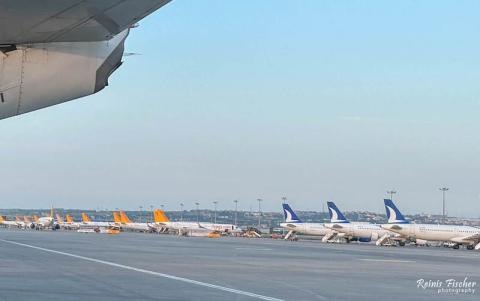
Istanbul Sabiha Gökçen International Airport is located some 32 km southeast of the city center, airport serves as the hub for AnadoluJet and Pegasus Airlines.
The facility is named after Sabiha Gökçen, the adoptive daughter of Mustafa Kemal Atatürk and the first female fighter pilot in the world. Although Istanbul Airport, located 63 km (39 mi) west of the European side of Istanbul, is larger, Sabiha Gökçen is still one of the largest airports in the country.
I have been traveling via Sabiha Gokcen Airport several times flying in and out routes like Tbilisi, Trabzon, Izmir, Barcelona, and more. Most of the time flying Pegasus Airlines.
The airport was built because Atatürk International Airport (located on the European side) was not large enough to meet the booming passenger demands (both domestic and international).
When traveling to or from Sabiha Gocken airport see How to Get around Istanbul for cheap with this ride-sharing Taxi app
Georgian mythology, Founding Father of Georgia - Kartlos and Jesus Robe in Mtskheta
| Living in Georgia | 67 seen
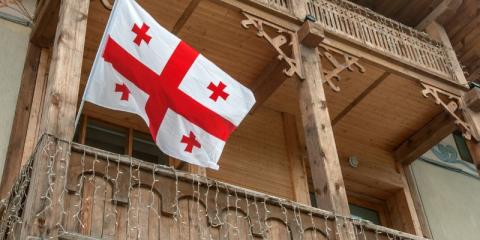
Georgian mythology is a rich tapestry of legends and stories that provide insight into the country's cultural heritage. One of the most interesting myths is the story of Kartlos, the founding father of Georgia.
According to Georgian mythology, Kartlos was the grandson of Japheth, one of Noah's three sons. He was the eldest son of Targamos and great-grandson of King Nimrod. When his father died, Kartlos inherited the kingdom and became the first king of Kartli, which is modern-day Georgia.
The story of Kartlos is deeply intertwined with Georgian culture and history, and he is considered a national hero. His name is still used in modern-day Georgia, and it is the root of the country's name. Kartli, the region where Kartlos ruled, was later called Sakartvelo, which means "the land of Kartlos" in Georgian.
Another important aspect of Georgian mythology is the story of the Jesus Robe in Mtskheta. Mtskheta is a historic city in eastern Georgia that was once the capital of the country. According to legend, the robe that Jesus Christ wore during his crucifixion was brought to Mtskheta by a Georgian Jew named Elioz. He is said to have acquired the robe from a…
Top Laptops for Graphic Design Students and Professionals
| Laptop Reviews | 74 seen

If you're a graphic designer, finding the best laptop for your needs can be a daunting task. You need a machine that is powerful enough to run complex design software, has a high-quality display for accurate color reproduction, and is portable enough to take with you on the go.
In this article, we'll take a look at the best laptops for graphic design, and help you find the perfect machine for your needs.
As an Amazon Associate, I earn from qualifying purchases. This means that if you click on a link to a product on Amazon.com and make a purchase, I may earn a commission. The commission I earn is at no extra cost to you
Apple MacBook Pro 16-inchThe Apple MacBook Pro 16-inch is a top pick for graphic designers. It has a stunning Retina display with True Tone technology, which automatically adjusts the color temperature based on your environment. The MacBook Pro also has a powerful 9th-generation 8-core Intel Core i9 processor, 16GB of RAM, and a 512GB solid-state drive. It also has a dedicated AMD Radeon Pro 5500M graphics card, making it a great choice for graphic design.
Dell XPS 15The Dell XPS 15 is another great option for graphic designers…
Drupal module: User Picture Field - A Brilliant Solution for Styling forms With Display Suite
| Drupal Development | 22 seen

Working with complex Drupal projects I'm always trying to escape many rewrites of existing Drupal built-in functionality.
This time I got a client's request to have a user edit form with two-level admin: One for username and password information - the second for custom user profile fields, like occupation, location, gender, etc.
At the start I said - well, let's use the Profile2 module, to handle this task, but soon I found there are bugs, and we all hate bugs, so I found a brilliant solution how to get rid of the Profile2 module, but to keep existing functionality.
Now arrived another problem - how to display the default Drupal user picture ($picture) using the Display suite module on two columns. Thing is, there are no problems to display a custom user image field with help of the Display suite, but there are problems to display the default picture field:
Found this little nice module after a couple of hours of investigating how to show the user picture next to comments.
You might wonder - hell, what's wrong with you dude - Drupal has a built-in picture field for user profiles and it works on comment forms great…
Grigory Leps: The Russian Musician Who Fell in Love with Georgia
| Living in Georgia | 33 seen
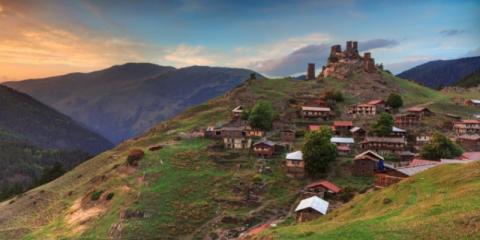
Grigory Leps is a well-known Russian singer who has gained immense popularity not only in Russia but also in other parts of the world. Leps has been to Georgia several times for concerts and has garnered a large following among Georgians.
The Georgian people have always had a fondness for Russian culture, and Grigory Leps' music has struck a chord with many. His soulful voice, catchy tunes, and relatable lyrics have made him a favorite of many music enthusiasts in Georgia.
The first time Grigory Leps came to Georgia was in December 7th, 2014 when he performed in the capital city of Tbilisi. We attended this concert at Tbilisi sports palace. I managed to take a short YouTube video with Leps shouting loud - Sakartvelo Gaumarjos.
He was warmly welcomed by the Georgian people, who appreciated his music and his charismatic personality. Since then, he has come back to Georgia for several concerts, and his popularity has only grown.
One of the reasons for Leps' popularity in Georgia is his ability to sing in both Russian and Georgian. He has even recorded a few Georgian songs, which have become quite popular in the country. One of his most famous…
Shota Rustaveli Tbilisi International Airport
| Airports | 48 seen
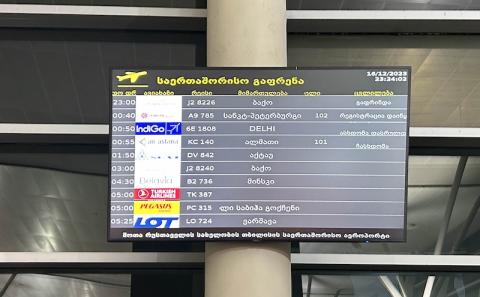
Shota Rustaveli Tbilisi International Airport is the busiest international airport in Georgia, located 17 km (11 mi) southeast of capital Tbilisi. The airport handled 3.7 million passengers in 2019. Due to the global coronavirus pandemic, the airspace of Georgia was closed for most of 2020 causing the number of travelers through Tbilisi airport to drop by 84% to less than 600,000.
Tbilisi Airport is home to Georgian flag carrier Georgian Airways and MyWay Airlines, which was founded in 2017. The airport is served by approximately 30 airlines, mainly from Europe, the Middle East, and Central Asia serving roughly 30 destinations out of Tbilisi.
Due to the increasing popularity of Georgia and the city of Tbilisi as a tourist destination, the number of travelers grew since 2010 from 1 million to almost 4 million until the outbreak of the coronavirus pandemic.
Tbilisi International Airport is operated by TAV Urban Georgia since October 2005 which concession has been extended until at least 2027. In Georgia, the company also operates Batumi Airport for a 20-year term since May 2007. TAV Airports Holding, which owns 76% shares in Tbilisi airport operator…